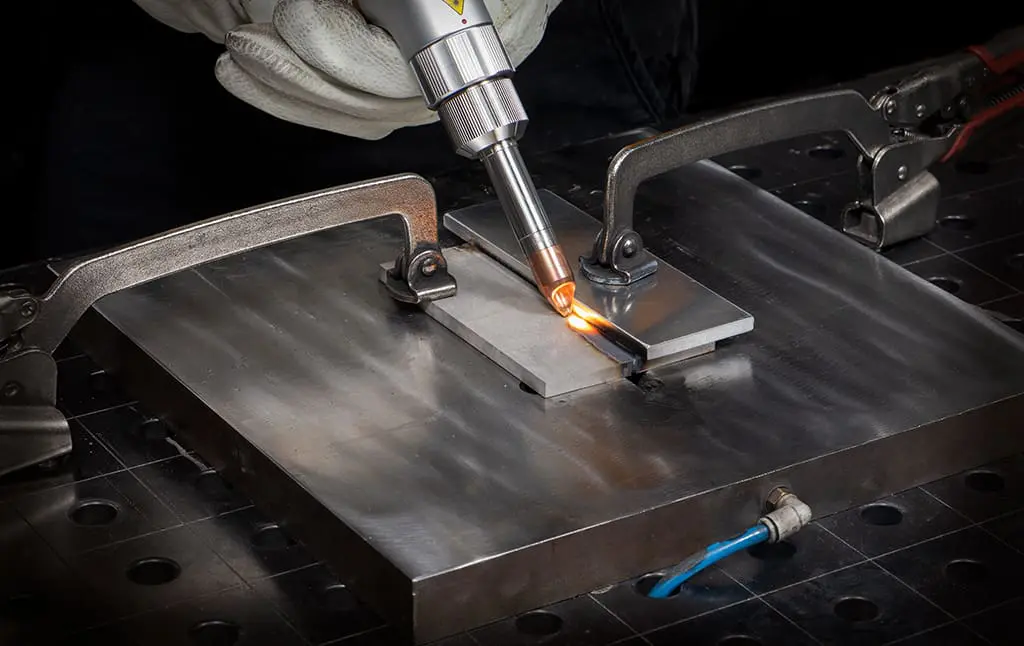In the world of welding, technological advancements have continually pushed the boundaries of what is possible. One such innovation is the IPG LightWELD Hand Held Laser Welder, a cutting-edge welding solution that has been gaining attention for its precision and efficiency. In this article, we will delve into the differences (warts and all) between the IPG LightWELD Hand HeldLaser Welder and traditional MIG (Metal Inert Gas) and TIG (Tungsten Inert Gas) welding processes. By the end, you’ll have a clear understanding of how these welding methods compare and why the IPG LightWELD Hand Held Laser Welder has been making waves in the welding industry.
Speed and Efficiency
One of the primary advantages of the IPG LightWELD is its remarkable speed and efficiency. Traditional MIG and TIG welding processes involve manually feeding a filler material into the weld pool, which can be time-consuming and may require multiple passes to achieve the desired weld quality. In contrast, the IPG LightWELD Laser Welder utilises a high-intensity laser beam to rapidly melt and fuse metals together. This precision welding technique can significantly reduce welding time, making it a preferred choice for industries where productivity and speed are crucial.
Precision and Accuracy
Accuracy is paramount in welding, especially when working with delicate or intricate components. Laser Welders excel in this aspect. They offer unmatched precision and accuracy, thanks to the focused laser beam that can be precisely controlled to achieve the desired weld size and shape. Traditional MIG and TIG welding processes, on the other hand, rely heavily on the skill of the welder to maintain accuracy, which can be challenging, particularly in high-stress welding applications.
Heat Affected Zone (HAZ) and Distortion
Minimising the Heat Affected Zone (HAZ) and distortion in the welded materials is a critical consideration in many welding applications. The IPG LightWELD Laser Welder has a significant advantage in this regard. Its focused laser beam generates less heat, resulting in a smaller HAZ and reduced distortion in the welded materials. Traditional MIG and TIG welding methods, which rely on a continuous arc and intense heat, may cause a larger HAZ and more distortion, making them less suitable for precision welding tasks.
Material Compatibility
The choice of welding method can significantly impact the range of materials that can be effectively welded. While MIG and TIG welding are versatile and can be used for various metals, the IPG LightWELD Laser Welder excels when it comes to welding dissimilar metals and non-metallic materials. Its precise control over the laser beam allows it to join materials that would be challenging or impossible to weld using traditional methods.
Weld Quality and Consistency
Consistency is key in welding, and the IPG LightWELD Laser Welder delivers exceptional weld quality and consistency. It eliminates the variability associated with manual welder skill, ensuring that each weld meets strict quality standards. Traditional welding methods may produce varying results based on the skill and experience of the welder, leading to potential quality issues.
Initial Equipment Cost
One of the most significant drawbacks of laser welding is the high initial equipment cost. Laser welding machines, including the IPG LightWELD Laser Welder, are complex and sophisticated pieces of equipment, which come with a substantial price tag. In contrast, TIG and MIG welding setups are generally more affordable, making them accessible to a wider range of users and smaller businesses.
Limited Penetration
Laser welding’s focused and concentrated heat source can be a drawback when it comes to achieving deep penetration in thick materials. Traditional TIG welding, with its continuous arc, can offer better penetration in some applications. Additionally, laser welding may struggle with materials that are highly reflective or transparent to the laser beam. Typically Laser welding is suitable for materials up to 8.5mm thick (the latest model, the XR 2000 is capable of this)
Environmental Considerations
Laser welding generates a significant amount of heat and, in some cases, hazardous fumes. Adequate ventilation and safety measures are essential when working with laser welding equipment. In contrast, TIG and MIG welding typically produce fewer fumes, making them more environmentally friendly in some contexts.
Power Consumption
Laser welding machines require substantial electrical power to operate efficiently, which can result in higher energy costs. TIG and MIG welding machines are generally more energy-efficient and may be a more cost-effective choice for users concerned about power consumption.
Safety Measures
While all welders will be used to having to wear a welding helmet, laser welding requires additional safe-guards. As well as the helmet, laser-safe glasses need to be worn underneath the helmet.
While the IPG LightWELD Laser Welder and laser welding, in general, offer numerous advantages, it’s crucial to consider the drawbacks and limitations as well. The initial equipment cost, limited penetration capabilities, environmental considerations, and power consumption are factors that may make traditional TIG and MIG welding methods more suitable for certain applications and budgets.
Ultimately, the choice between laser welding and traditional welding methods depends on your specific welding needs and priorities. Some industries and applications benefit greatly from the precision and efficiency of laser welding, while others may find that the simplicity and lower cost of TIG and MIG welding better align with their requirements. Understanding these drawbacks allows you to make an informed decision and select the welding method that best suits your project and business objectives.
Browse the range of LightWELD Laser Welding Machines today, or speak to us for more information on 01432 346 580 or email [email protected]
Published 26th September 2023


